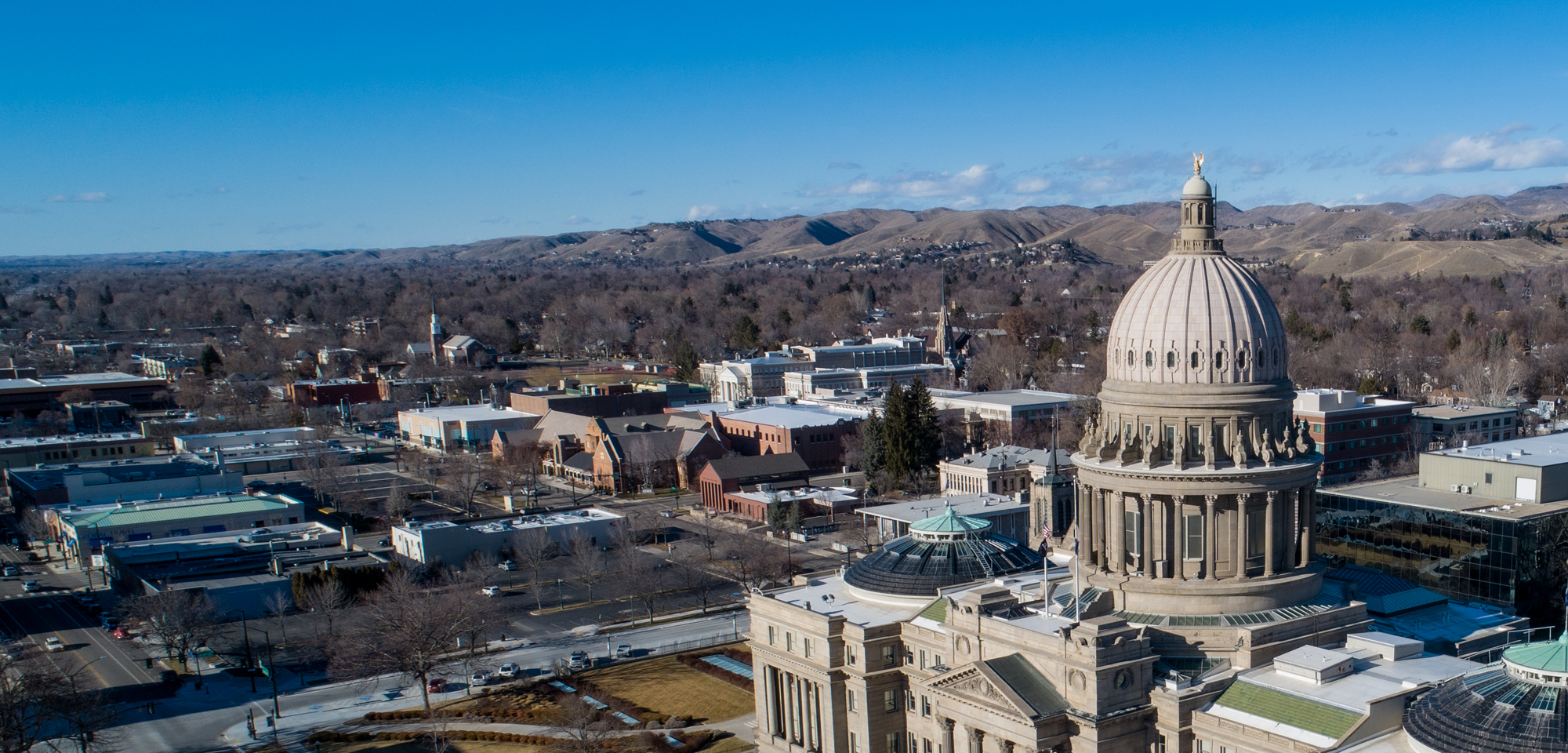
Up to $10M per recipient now available as of April 1, 2022
On April 1, 2022, the final rule of the ARPA Coronavirus State and Local Fiscal Recovery Funds (SLFRF) program went into effect. It introduced several important changes to the legislation. Most notable was the “standard allowance,” which allows counties to use up to $10 million of SLFRF funds as lost revenue to provide government services without using the Treasury loss formula.
This article shares:
- An overview of the SLFRF program
- Changes introduced by the final rule that deliver broader flexibility and greater simplicity to the program
- How funds can be used for aerial imagery to help provide government services
SLFRF Overview
Congress passed ARPA in March 2021, enacting the SLFRF program to provide $350 billion in fiscal relief for state, local, and Tribal government losses related to COVID-19.
In May 2021, Treasury published an interim final rule (IFR) to describe eligible uses and deliver money quickly. One of the eligible uses for funds is to replace lost public sector revenue allowing recipients to provide government services. Under the IFR, a recipient’s loss, or reduction in general revenue, was calculated using a multi-step formula provided by Treasury.
In January 2022, after considering feedback from the public, Treasury adopted the IFR, with amendments aimed at clarifying the program and making several changes to the eligible uses.
Changes to the Final Rule: The Standard Allowance
On January 6, 2022, Treasury announced the final rule for the SLFRF program, which delivered broader flexibility and greater simplicity in the program compared to the IFR. Among other clarifications and changes, the final rule introduced a new option for calculating lost public sector revenue—the standard allowance. Recipients can now select between the standard allowance for revenue loss, up to $10 million in aggregate, or complete the full revenue loss calculation contained in the rule, and then use that amount (not to exceed the award amount) to fund government services. The final rule also adopted streamlined reporting requirements for recipients who select the standard allowance. It became effective on April 1, 2022.
 Source: U.S. Department of the Treasury, Coronavirus State & Local Fiscal Recovery Funds: Overview of the Final Rule, (pg. 6)
Source: U.S. Department of the Treasury, Coronavirus State & Local Fiscal Recovery Funds: Overview of the Final Rule, (pg. 6)
The revenue loss category is the broadest and most flexible of the eligible uses, and can be used to fund any “government services,” subject to specific limited restrictions. According to guidance, government services generally include any service traditionally provided by the government, making this use less restrictive than some of the other eligible use categories.
Under the SLFRF, funds must be used for costs incurred or obligated during the period from March 3, 2021 to December 31, 2024 and expended by December 31, 2026. Additionally, recipients may undertake projects on their own or through subrecipients, including by pooling with other recipients.
Each recipient should review program requirements, including the final rule and the recipient’s Award Terms and Conditions.
See an overview of the final rule from Treasury’s website here.
How Aerial Imagery Can Be Used to Help Provide Government Services
As mentioned, the SLFRF program provides $350 billion in fiscal relief for state, local, and Tribal government losses related to COVID-19.
Check your county’s SLFRF allocation from Treasury’s website here.
Under conditions listed above, these funds can be used to deliver traditional government services.
Local governments use aerial imagery to deliver a wide variety of government services. Specifically, aerial imagery can used to help:
- Provide vital government services more efficiently, including using high-quality oblique imagery for assessment, GIS, surveying, asset management, emergency response, public works, and public safety/911.
- Share valuable aerial imagery and data with school, road, sheriff, and fire departments.
- Mitigate staff shortages and use aerial imagery technology to help departments save time and work more efficiently.
- Fulfill responsibilities remotely and improve safety by minimizing field visits.
All state and local governments must be in compliance with the final rule beginning April 1, 2022. Recipients must allocate funds by December 31, 2024, and spend them by December 31, 2026 or risk forfeiture.
Contact your EagleView representative to discuss how aerial imagery can help support your government departments deliver vital government services more efficiently.
Disclosure: The descriptions provided in this document summarize certain provisions of the final rule but are non-exhaustive, do not describe all terms and conditions associated with the use of SLFRF, and do not describe all requirements that may apply to this funding. Any SLFRF funds received are also subject to the terms and conditions of the agreement entered into by Treasury and the respective jurisdiction, which incorporate the provisions of the final rule and the guidance that implements this program.